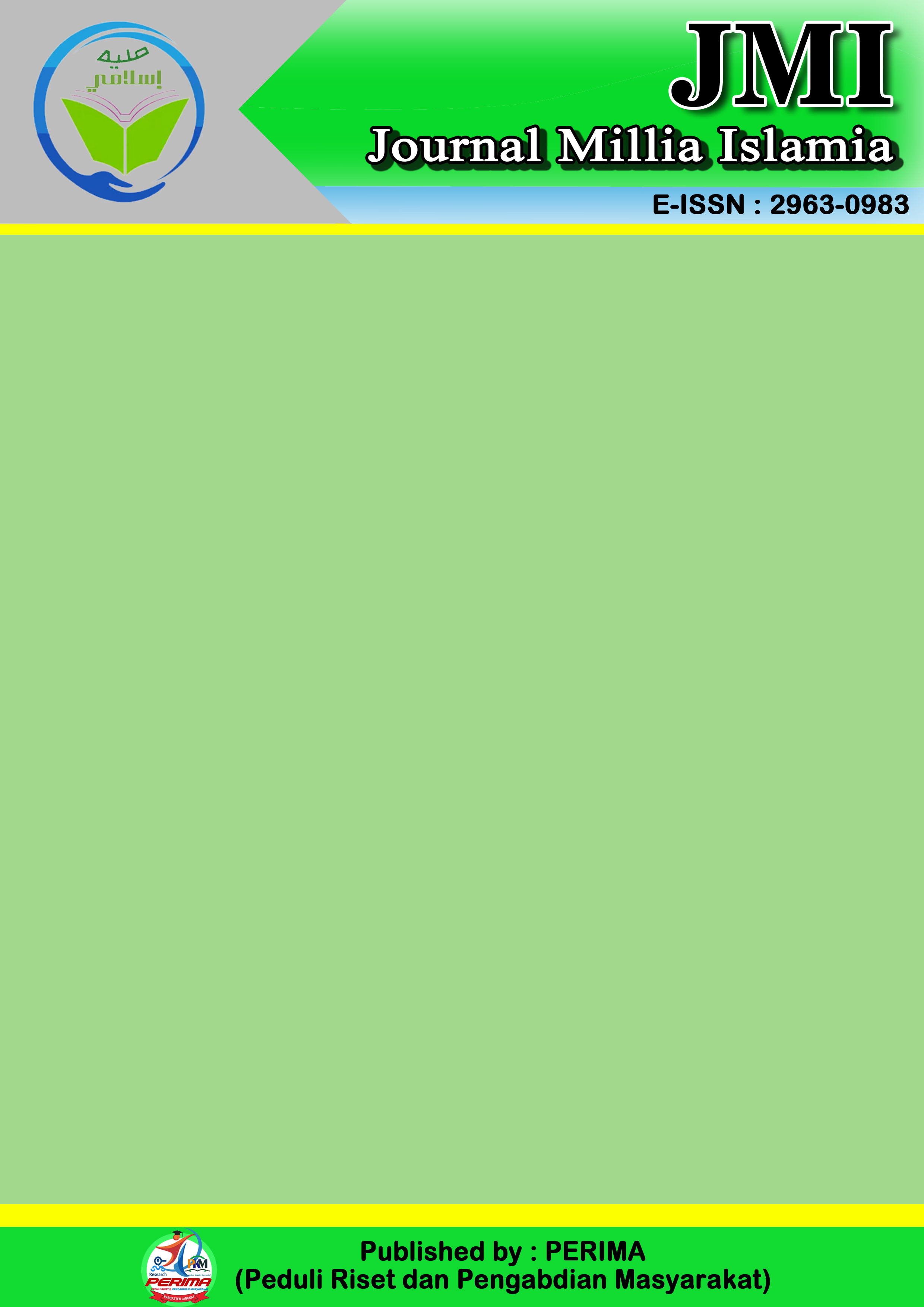Hubungan Penggunaan Gadget Terhadap Motivasi Belajar Pada Mata Pelajaran Pendidikan Agama Islam Siswa Kelas VII-A di SMP IT Adzkia Pangkalan
Abstract
This study aims to determine the relationship between gadget use and student learning motivation at SMP IT Adzkia Pangkalan Berandan, given the phenomenon of increasing intensity of digital device use among adolescents, which has the potential to affect their attitudes and academic achievement. The research method used is quantitative with a correlational type, where the independent variable is gadget use and the dependent variable is student learning motivation. The research population consisted of all students in class VII-A in the 2024/2025 academic year, with a sample of 35 people determined using proportional stratified random sampling techniques using the Slovin formula at a 5% error rate. Data collection was conducted through a Likert scale-based questionnaire, structured interviews, and documentation, then analyzed using validity, reliability, Pearson's correlation, simple linear regression, and t/ANOVA tests using the SPSS program. The results showed that 1) the majority of students (57.14%) were in the high and non-educational gadget usage category, with a dominant usage duration of more than 4 hours per day for entertainment, while 42.86% of students used gadgets more educationally. 2) Students' learning motivation was generally in the fairly high category with an average score of 20.40 out of a total of 25, indicating a good internal drive to achieve despite the frequent non-academic use of gadgets. 3) There is a moderate but significant relationship between gadget use and learning motivation (r = 0.455; p = 0.006), with an influence contribution of 20.7% based on regression testing, as well as a significant difference in motivation between high and low gadget user groups (t = 3.762; p = 0.001). These findings confirm that gadget use has a real influence on student learning motivation, although it is still influenced by other factors.
Downloads
References
Agustina. (2023). Pengaruh media sosial terhadap perilaku remaja. Jakarta: Penerbit XYZ.
Alamer, A., Al Sultan, A., & Alharfi, A. (2025). Motivasi ekstrinsik dalam pendidikan. Jurnal Pendidikan Global, 12(2), 55–70.
Almourad, M., Al Sultan, A., & Alharfi, A. (2021). Peran media sosial dalam pendidikan: Tinjauan literatur. Jurnal Teknologi Pendidikan, 15(2), 45–60.
Ananda, R., & Rasyid, A. (2022). Pengaruh aplikasi edukatif terhadap kreativitas siswa SMP. Jurnal Pendidikan Modern, 8(1), 25–36.
Brunton, J., & Sugden, R. (2025). Ekonomi digital dan dampaknya terhadap masyarakat. Jakarta: Penerbit ABC.
Cortés-Albornoz, J., dkk. (2023). Penggunaan media sosial dan kesehatan mental: Tinjauan sistematis. Jurnal Psikologi, 12(3), 123–145.
Fadilah. (2020). Penerapan teori goal-setting dalam pembelajaran. Jurnal Didaktika Pendidikan, 5(2), 99–110.
Fan, Y., Liu, Y., Zhang, Y., & Pan, Z. (2025). Tren baru dalam pemasaran digital. Beijing: Penerbit DEF.
Fauziah. (2022). Dampak media sosial terhadap kesehatan mental remaja. Medan: Penerbit GHI.







